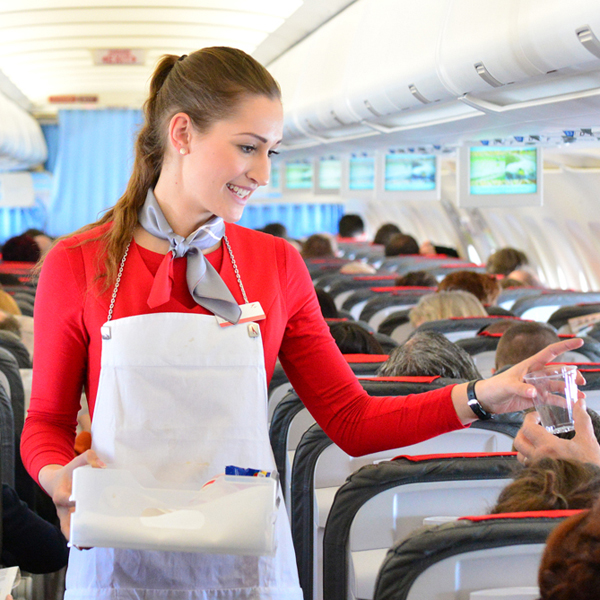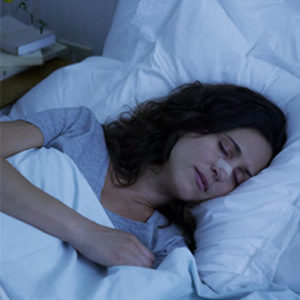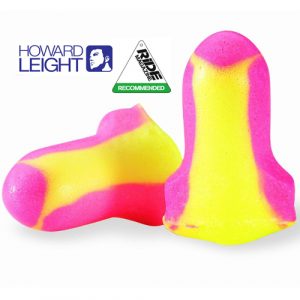Why Do You Need to Wear Earplugs When Flying on an Airplane?
When flying, do you feel pain in your ears? Do you hate travelling because you know your eardrums are going to hurt? You can end the suffering once and for all! The solution to this problem is fairly simple: when flying use earplugs!
Why Do Our Ears Ache When Flying on a Plane?
Compared to the atmospheric pressure on the ground, the pressure in the plane is lower. It is actually equivalent to the atmospheric pressure you would experience at high altitudes like on mountains or at 2,000 meters high on average. Even though planes are depressurised, it isn’t easy to recreate the exact atmospheric pressure conditions as at ground level. A lot of kerosene is needed for this process, making it expensive.
Earaches are a result of the internal and external pressure difference. The body uses the Eustachian tube, a tube that connects the middle ear to the nasopharynx, to adjust itself. The air found in the middle ear never comes into direct contact with the external atmosphere. The Eustachian tube’s active opening is needed for pressure equalisation between the outside atmosphere and the middle ear, particularly when flying on an airplane.
The process is gradual and it takes some time. Plane travel might result in pressure variations that are too extreme for the ears and it might be difficult for them to adjust. It takes too much time for the ears to adjust and as a result, the pressure difference impacts the tympanic membranes.
This may make a flight uncomfortable and painful for the ears. In order to balance the pressure in the middle ear, the Eustachian tube is essential. The air in the middle ear expands as the pressure inside the aircraft falls, creating an imbalance between internal and exterior pressure.
People frequently employ numerous strategies to balance the pressure in their ears as a coping mechanism. The Eustachian tube can be opened by swallowing, which enables air to enter the middle ear. Gum chewing or candy-sucking can also encourage swallowing and offer relief. Another method is the Valsalva manoeuvre, which involves pinching one’s nose and gently blowing air against it to reduce pressure by causing the Eustachian tube to open.
These approaches, nevertheless, might not always work, especially for people whose Eustachian tubes are congested or blocked. Allergies, sinus infections, or common colds are a few examples of conditions that might contribute to this since they induce swelling and inflammation in the tubes. Such circumstances make it more difficult for the ears to efficiently equalize pressure, resulting in protracted discomfort and agony during the trip.
It is advised to stay away from flying if you have any upper respiratory tract diseases or allergies in order to reduce these symptoms. Prior to the trip, using decongestant nasal sprays or oral drugs might assist lessen congestion and facilitate pressure equalisation. Keeping hydrated throughout the journey and frequently swallowing or yawning might also help.
Even though they can be uncomfortable, earaches on flights are usually very momentary and go away soon the plane lands and the pressure equalises. In order to reduce pain, it is critical to be aware of any current conditions that can impair how well the Eustachian tube functions. Before taking a flight, it is essential to speak with a medical practitioner, especially if you have a persistent ear disease.
How Do Earplugs for Flying Function?
Earplugs for flying act like a “pad” to minimise the atmospheric variations impact. This has a number of benefits:
- Minimise the discomfort and the ache;
- Prevent hearing losses;
- Stop ears from getting blocked.
In more severe cases, people who suffer from earaches while flying experience the following symptoms:
- Lightheadedness;
- Buzzing in the ears;
- Bleedings;
- Nausea or vomiting.
Which are the Best Earplugs for Flying?
The most popular earplugs for flyers were designed in the USA by Cirrus Healthcare. EarPlanes are pressure-regulating earplugs which have been specifically designed to be used on an aeroplane. They are designed to be regulate air pressure discomfort and reduce harsh noise. They are available for both adults and for children.
Alpine earplugs also offer a range called FlyFit, which are also very popular with our frequent flyers. Another good choice is Haspro Fly Earplugs for Flying . As well as the standard adult earplugs for flying, you can also get Haspro Fly Earplugs for Children.
Not Sure Which Earplugs to Buy? Try a Sample Pack!
We know that buying earplugs can be a nightmare, with so many types and styles to choose from. That’s why we have put together a range of earplug sample packs that allow you to try a wide selection of ear plugs, before you decide which ones to invest in for future use. We offer a Men’s Earplugs Sample Pack and a Women’s Earplugs Sample Pack, both are incredibly popular and offer amazing value for money. Also we have a smaller earplugs for snoring pack and an earplugs for flying pack. Both of these are also great value choices.
To have the best possible flight, wear earplugs to protect your ears. Travel safely!
Photo Credit: “cabin_crew_service_(4)” (CC BY-SA 2.0) by Austrian Airlines
Zoom Health is a leading UK supplier of Home Health Tests and Earplugs
This post was originally published in February 2018. It was update in July 2023.





